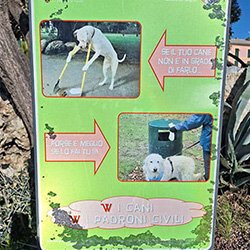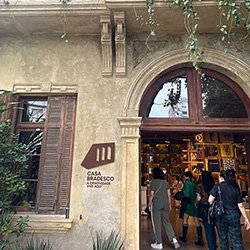I am not sure how children are raised in Japan and I would love to learn more.
Perhaps after reading my blog, you could get a clearer idea if the Italian approach is closer to the Japanese one or the American one is.
In order to give a simple example: would you let a child climb a shelf or a high ledge if he or she wanted to? In the United States he or she could. Permission would be granted with the idea that the earlier he or she experiences his or her strength and balance, the fewer risks he or she will face over time. In Italy most parents are so called ‘helicopter parents’, following their kids step after step and trying to prevent any accident or fall at any cost.
The different educational approach, however, begins a long time ago and must be aligned with the expectations of families I believe: an American parent's priority is for their child to develop independence, an Italian parent's priority is for them to be protected from danger and keep them close to the family as much as possible.
Having babysat in both Italy and the United States, I have noticed how the differences begin with the way they experience the home. An American family with small children has spaces and furniture that can get dirty, messy, and even painted on and ruined, and they lack expensive or difficult-to-clean heirlooms and objects. Instead, we may find aquariums, large exotic plants, bird feeders, and various natural elements with which the child can interact and which they have the opportunity and responsibility to care for, observing the spontaneous flow of life.

The difference with Italian homes undoubtedly also stems from that aesthetic taste which pays much more attention to detail than to the ‘practical and effective’ and that fills Italian homes with fragile objects, off-limits spaces, and things that require attention. In Italy, it's rare for a child to manage their living space independently. For example, we won't see them preparing snacks expertly using appliances and kitchen tools, perhaps because, in our mindset, their role as a child doesn't require it.
The Italian parent carries out their role by stepping in on their child's behalf, always staying close to them and mediating their relationship with the world.
The same attitude also leads to the opposite problem: a loss of self-awareness in one's ability to do very simple things, like dressing oneself or eating without being fed.
All this, besides hindering the acquisition of general self-awareness, certainly does not fuel the desire to grow, experiment, learn, and practice: how many tantrums arise from dissatisfaction due to a lack of habit of constantly inventing new challenges starting with simple things!
Italian children grow up very close to their loved ones, nourished by their presence and care, and separation is seen as a source of suffering, as if it were not natural that it must happen sooner or later, as if it could be postponed indefinitely.
Even in later life, the Italian family participates in the lives of its members, demanding that a compromise be found between everyone's wishes and that expectations are not disappointed.
Bottom line, the Italian child will be a child for almost his entire life, but he will have a profound understanding of the feelings and passions he has experienced, will not be able to think in a completely selfish way, and will be more accustomed to considering the happiness of those around him.
In the United States, however, at 18 years old, you effectively become part of your society as an active and productive element and you have access to services and opportunities that you reciprocate with a strong civic and patriotic sense.






























































